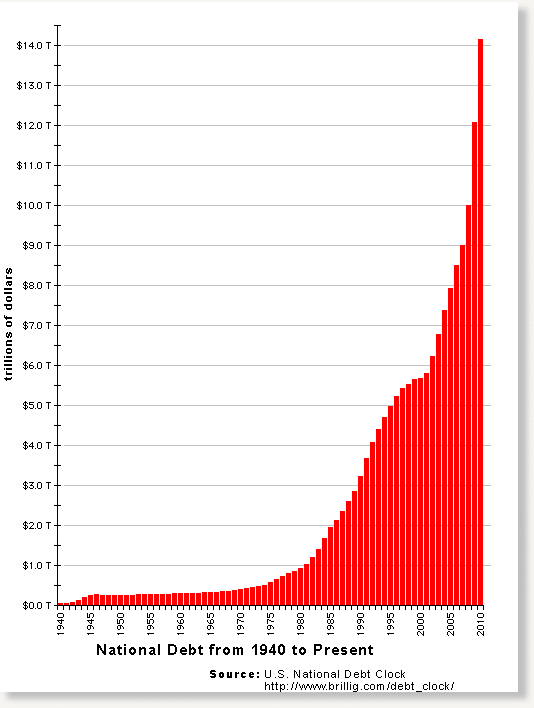The credit rating of the United States was downgraded for the first time in its history by Standard & Poor’s. The credit rating agencies had previously warned Congress that unless a credible deficit reduction plan was enacted, the United States could expect a downgrade.
Standard & Poor’s reduced the US credit rating from AAA to AA+ and said that “The downgrade reflects our opinion that the fiscal consolidation plan that Congress and the Administration recently agreed to falls short of what, in our view, would be necessary to stabilize the government’s medium-term debt dynamics”.
The United States has seen its spending and debts explode in the aftermath of the financial crisis of 2008. By borrowing trillions of dollars to stabilize the financial system and enact stimulus programs, the United States has seen its debt to GDP ratio climb above 100%. Research by scholars Rogoff and Reinhart have shown that once a country’s debt to GDP ratio exceeds 90%, the debt burden chokes off economic growth and impedes job creation (see Financial Crisis Approaches).
The debt of the United States has been increasing at a geometric rate which has caused grave concerns worldwide. Almost half of all spending by the US Government is now done with borrowed money.
Following the announcement by S&P, federal regulators immediately issued a press release. In a joint release from the Board of Governors of the Federal Reserve System, the Federal Deposit Insurance Corporation, the National Credit Union Administration and the Office of the Comptroller of the Currency, federally regulated institutions were told that for risk-based capital purposes, the debt of the United States was still considered to be risk free.
Earlier today, Standard & Poor’s rating agency lowered the long-term rating of the U.S. government and federal agencies from AAA to AA+. With regard to this action, the federal banking agencies are providing the following guidance to banks, savings associations, credit unions, and bank and savings and loan holding companies (collectively, banking organizations)
For risk-based capital purposes, the risk weights for Treasury securities and other securities issued or guaranteed by the U.S. government, government agencies, and government-sponsored entities will not change. The treatment of Treasury securities and other securities issued or guaranteed by the U.S. government, government agencies, and government-sponsored entities under other federal banking agency regulations, including, for example, the Federal Reserve Board’s Regulation W, will also be unaffected.
The long term impact of the credit downgrade could be profound since the United States borrows trillions of dollars from creditors such as China and Russia who have been extremely vocal in their displeasure over US money printing and excessive borrowing. The current rate of borrowing by the United States is clearly unsustainable. The impact of the US debt downgrade may takes years to play out but the downgrade is an ominous warning about the long term integrity of the US financial system.

Speak Your Mind
You must be logged in to post a comment.